
We speak with UNICEF spokesperson Tess Ingram in Gaza City, where the world’s top authority on hunger has formally declared a famine. The United Nations-backed Integrated Food Security Phase Classification, or IPC, says the “catastrophic” situation in Gaza’s largest urban center puts about half a million Palestinians at risk of starving to death. Many aid agencies have lifesaving supplies sitting in warehouses outside Gaza that they are unable to distribute due to Israeli restrictions. This comes as Israel has escalated its destruction of Gaza City with the intent of forcibly displacing residents further south.
“Hopefully world leaders will take it and use it as a catalyst to finally do something to try and get more aid to these children,” Ingram says of the famine declaration. “What we are asking for is for us to be allowed to do our jobs. We are being hampered every step of the way at the moment.”
Transcript
AMY GOODMAN: This is Democracy Now!, democracynow.org, The War and Peace Report. I’m Amy Goodman.
We’re going to stay in Gaza. In perhaps the first time famine has been declared outside the African continent, the U.N.-backed IPC has declared a full-blown catastrophic famine in Gaza City. The classification is characterized by, quote, “starvation, destitution and death,” with one in three children acutely malnourished. Unless Israel’s near-total blockade on food is lifted, the famine is expected to expand to Deir al-Balah and Khan Younis in coming weeks. Many aid agencies have lifesaving aid sitting in warehouses outside Gaza ready to enter.
For more, we go to Gaza City. We’re joined by Tess Ingram, spokesperson for UNICEF, the United Nations International Children’s Emergency Fund.
Tess, thanks so much for being with us. You heard about what happened at Nasser Hospital. Of course, there are so many patients there, children, adults, journalists, doctors, staff. From where you stand, this in the midst of the declaration by the U.N. that the Gaza Strip is in famine, can you comment?
TESS INGRAM: The rules of war are clear. Healthcare must be protected, as should journalists and all civilians, including children and humanitarian aid workers. And yet, throughout this conflict, we’ve seen a constant disregard for the rules of war.
And I saw it today here in Gaza City. I went to three hospitals, and at every hospital, I was met with rooms full of injured children, children with amputations, with horrific blast injuries, with fractures, with multiple shrapnel wounds and internal injuries. It is among the worst that I’ve seen. I was shocked by what I witnessed today in the hospitals.
And on top of that, of course, we have the crisis of famine, children with malnutrition. At a screening center I was at, again, today, all but one child that was screened had malnutrition while I was there. And that one child has been receiving treatment from UNICEF and hasn’t gotten better over the last three weeks. But it everywhere, Amy. Everywhere we look, children are being disproportionately affected by this horror.
AMY GOODMAN: Tell us what the IPC is. It’s actually quite a conservative organization within the United Nations. If you can talk about what it means to declare famine?
TESS INGRAM: They are quite conservative. They’re a group of independent technical experts. So, this group look at data specifically, and they look at it in the context of food insecurity. And they do this all the way around the world, from Somalia to Sudan, South Sudan. And now, of course, they’ve been watching the situation in Gaza for many, many months now. They actually first warned of the risk of famine in December 2023. And since then, they have been monitoring, collecting evidence and data.
So, for them to make this classification on Friday of a famine in Gaza City, and the risk of that spreading, and quickly, to Deir al-Balah and Khan Younis, is a very significant moment. It is a rare moment for the IPC to make such a finding. And it is backed by 50 pages of evidence behind that claim. So we take that very seriously.
Of course, we know here on the ground that the situation has been bad for so many months. One girl I spoke to yesterday, Sara, she’s 14, here in Gaza City, and she said to me, “Famine, of course, I know. I’ve been starving for five months now.” And I think that is the view of so many people here. But they were relieved that this really well-regarded group has put that on the international stage, and hopefully world leaders will take it and use it as a catalyst to finally do something to try and get more aid to these children.
AMY GOODMAN: Can you talk about the so-called Gaza Humanitarian Foundation? UNICEF, your organization, has been clear it will not participate in the militarization of aid. Over 200 NGOs have said that. Who are they? And what is happening when Palestinians race to sites — children, adults — to try to get food?
TESS INGRAM: We, as the United Nations, including UNICEF, have been very clear that we will not participate in the model that the GHF is using, because it does not meet our humanitarian principles of impartiality, of neutrality. And what that means in practice, really, is that we take aid to people where they are, in their places of refuge, and we deliver it to them with safety and with dignity. And we did that during the ceasefire, as a good example. We had 400 distribution points all over Gaza, so that we could bring the aid to the people where they were, safely and with dignity.
Now we are seeing the opposite at the moment from these sites. There’s just four of them. And we are seeing those apocalyptic scenes of people rushing to try and get what they can from these sites, of people being shot at while they are trying to do that. In our mind, that does not work. It does not meet the humanitarian principles that we adhere to. And that is why we are not working with that model.
What we are asking for is for us to be allowed to do our jobs. We are being hampered every step of the way at the moment. And we want to be able to scale up, and we need to be able to scale up, because a famine is underway in Gaza. It is more important now than it ever has been. So, it’s critical that the U.N. is allowed to work.
AMY GOODMAN: Can you explain what actually happens with these hundreds of trucks that are trying to get into Gaza right now?
TESS INGRAM: That’s right. We’ve got hundreds of trucks outside waiting to come into the Gaza Strip, including with lifesaving supplies for children, equipment for hospitals that’s so desperately needed. And, look, there’s no good reason why that cannot be allowed in with urgency. But what we’re seeing is those trucks not being allowed to cross, for example, at Kerem Shalom in the south.
But then, we have challenges inside, too. Even the few trucks that come into the Gaza Strip, those trucks are offloaded at a crossing, and then we have to get permission to go and collect the aid from the crossing. It’s not a drive-thru, Amy. We can’t just go there whenever we like to collect the supplies. We have to ask for permission. We have to receive what we call a green light to undertake that mission. Sometimes we might get the permission, but then we are delayed for many hours before we can leave, or we’re delayed along the way. We face waiting at holding points. Sometimes for our teams, it can take up to 20 hours to do a round trip to collect the aid, which is obscene, when this crossing is just a few kilometers away.
And then, of course, if we do successfully collect the aid, we have take it out of the crossing, again with permission. We often have to travel down a designated route, which is not always a route that we would want to choose to take. Perhaps it’s not safe. Perhaps it’s a route we know where there are armed criminal gangs attempting to loot the aid. So, there’s so many obstacles that we face. And what we’re repeatedly calling for is for these obstacles to be addressed.
There are clear solutions. Give the U.N. more access to collect from the crossings. Give us multiple safe routes inside of the Gaza Strip. And more important than anything, allow more trucks to come in, because we know that if we flood the Gaza Strip with aid, we will, one, reach more people with the supplies that they need, but, two, we will address this desperation among the community, and we will see the looting decrease.
AMY GOODMAN: Do you think — your response to the Israeli Prime Minister Netanyahu rejecting the IPC famine report, calling it an “outright lie,” yet at the same time not allowing in international journalists to verify what’s going on on the ground?
TESS INGRAM: To suggest that this report is a lie contradicts everything that we know, everything that we’ve been saying for months, and it’s disrespectful to the work of the teams on the ground, to this body of international experts and to the people of Gaza. To be having this conversation about whether or not it is true, while children are dying, it’s like we’re living in an alternate universe.
It’s clear that children are starving. They’re dying of malnutrition. A group of global experts has said that there is a famine. And those of us here on the ground are seeing it every day in our work, and we’re traumatized by it. We are seeing children die every day. So there is no doubt in any of our minds that we’re in a crisis and that the solution to the crisis is to stop arguing about it, to open the crossings and to allow aid into the Gaza Strip so that children can survive.
AMY GOODMAN: Tess Ingram, I know you have to go, but I want to ask you — you’re speaking to us from Gaza City. Israel’s defense minister has pledged to level Gaza City, unless there is an agreement between Hamas and Israel around a ceasefire. Can you respond to the fear on the ground? One million people live in Gaza City?
TESS INGRAM: Almost a million people live here, that’s right. And every second one of them, half of the population, are children. And I think we have to remember that when we’re talking about this. We’re talking about a population where every second person is a child. And, of course, these children have endured almost two years of the unimaginable, and they’re exhausted, they’re traumatized, they’re starving. This is an area where a famine was just classified. This is an area where hospitals are full of injured children.
I was talking to doctors today at hospitals in Gaza City about what they’re going to do if the worst comes true and they have to try and evacuate, and they don’t know where they will go. They don’t know how they will remove incubators filled with babies or children from ICU units hooked up to lifesaving equipment. This really is a situation that people are lost for words to describe and to plan for, and people are afraid. I was at a learning center yesterday, and I sat with a classroom of children and talked to them about it, and they’re scared. Many of them have already been displaced to the south, returned earlier this year, and they don’t want to do it again, because they know that what awaits them down there is also not safe and not sufficient to meet their needs.
AMY GOODMAN: Finally, we just talked to Dr. Mimi Syed, who is a U.S. doctor who was denied entry, though she had been there several times in Gaza. She said this is increasingly happening for doctors. So, you have more and more injured and dying. And is this true? Is this a threat that doctors increasingly are not being allowed into Gaza?
TESS INGRAM: I don’t know the details of how many doctors are not being allowed in, but it’s true that there’s a number of NGOs that work in the Gaza district who are at risk of being deregistered in the coming weeks, or their international staff not being allowed to enter Gaza. And that would be catastrophic for the response. So many of these NGOs are critical, not just in terms of medical care, but many aspects of the humanitarian response here in the Gaza Strip. So, as a community of humanitarian workers, we’ve been speaking out about that and our fears around what would happen if we saw parts of this response not being permitted to continue at such a critical time for the people and children of Gaza.
AMY GOODMAN: Tess Ingram, we want to thank you so much for being with us, spokesperson for UNICEF, stands for United Nations International Children’s Emergency Fund, speaking to us just after the U.N. declared a famine in the Gaza Strip. She’s joining us from Gaza City.
When we come back, Kilmar Abrego Garcia was just freed from ICE detention, has now reportedly been taken back into ICE detention. The government is threatening to deport him to Uganda, a country he has no connection to. Stay with us.
[break]
AMY GOODMAN: “I Ain’t Got No Home in This World Anymore,” a rendition of Billy Bragg — by Billy Bragg in our Democracy Now! studio.



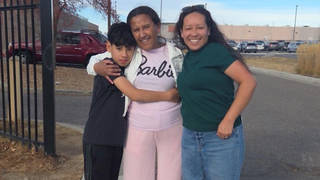
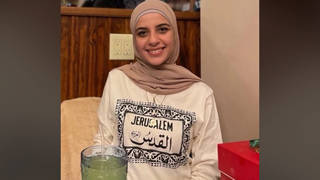
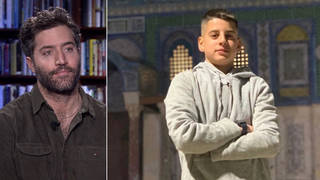
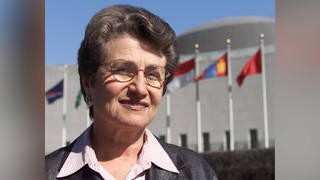
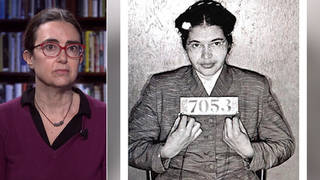
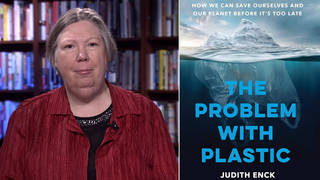
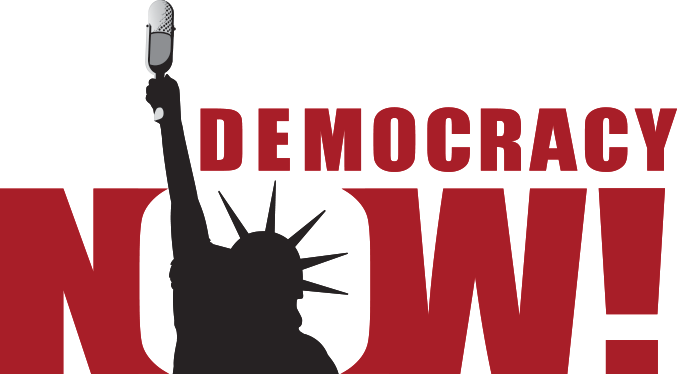
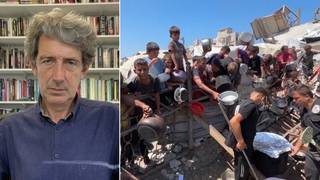
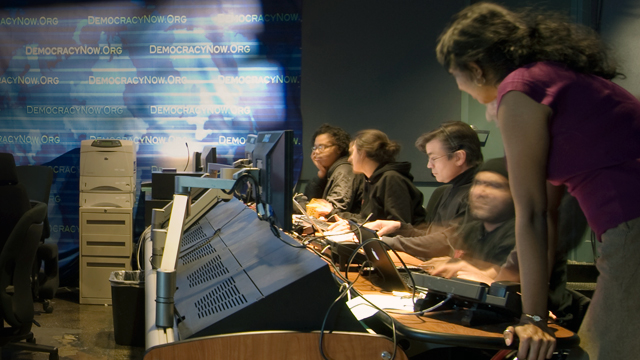
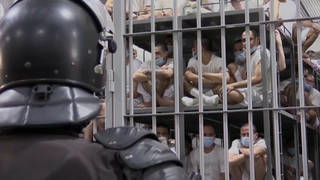
Media Options